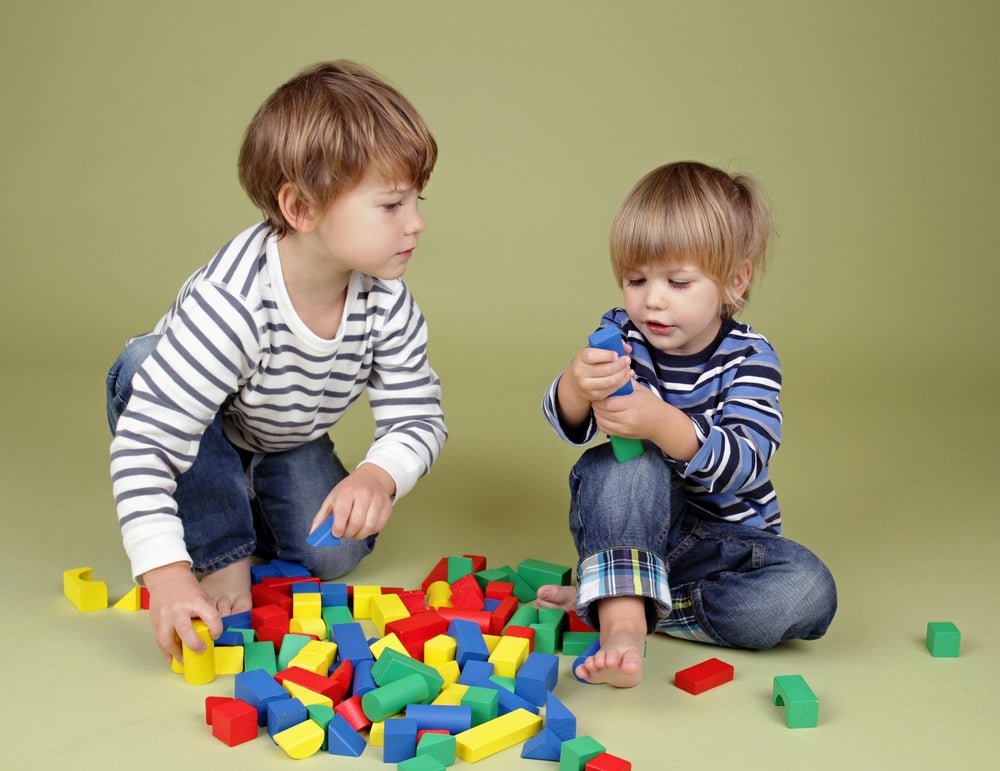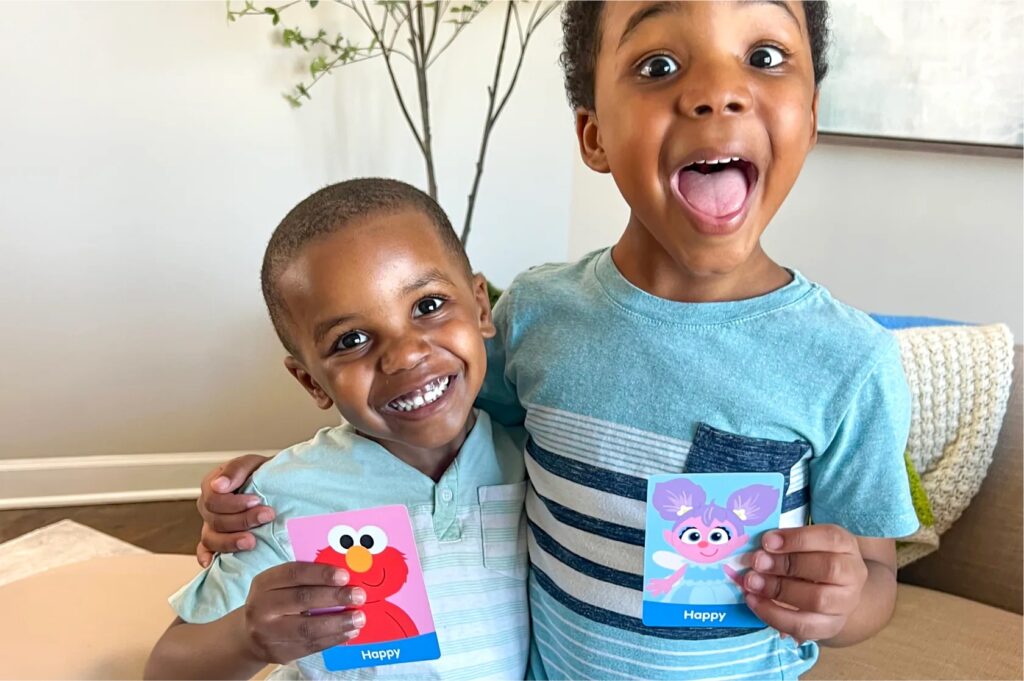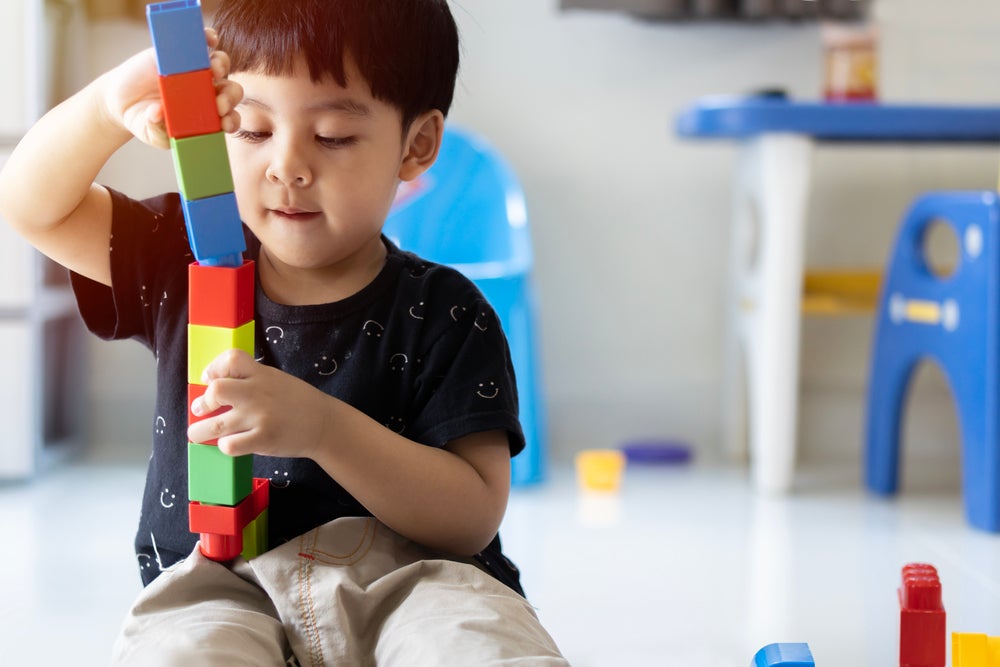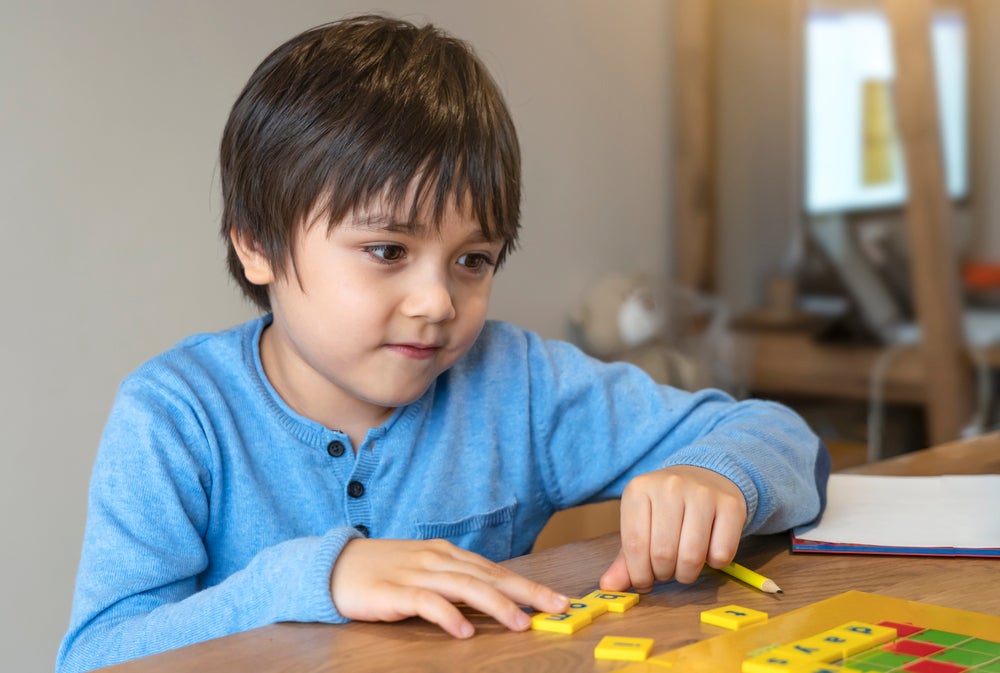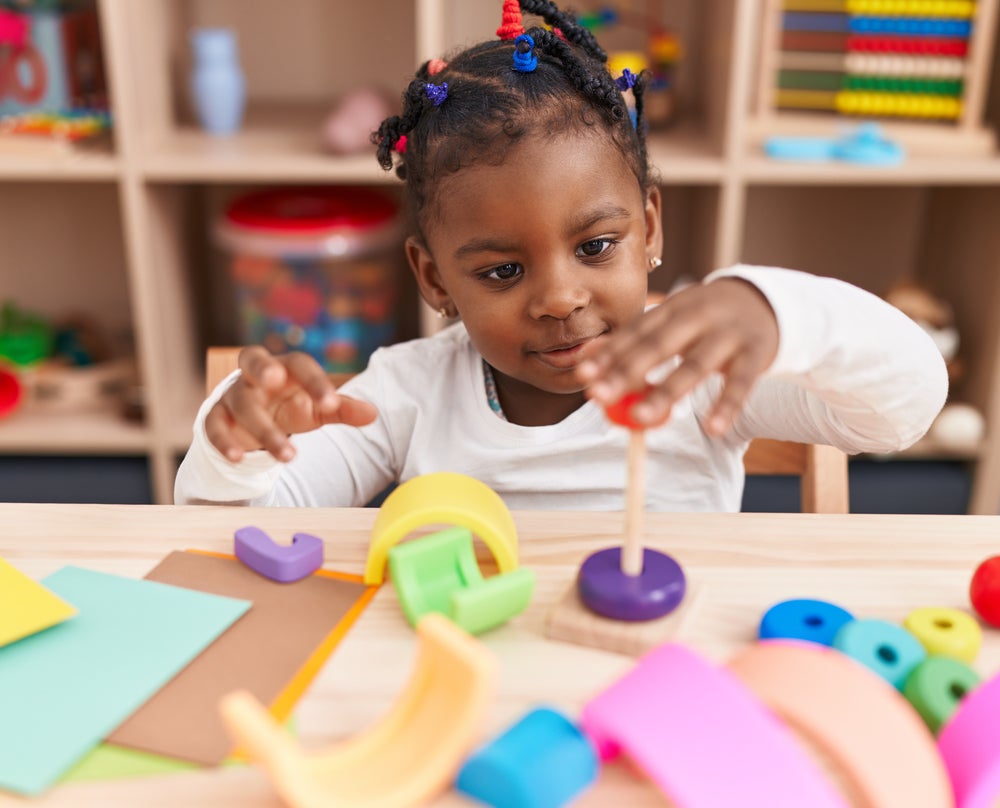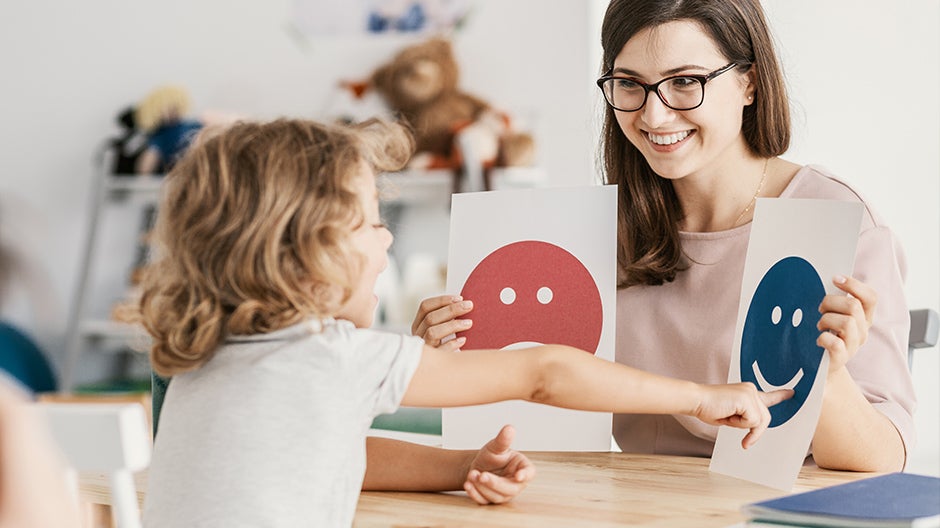Whether your child is just starting to learn preschool math or they are becoming a pre-k math whiz, number matching games can be an incredibly helpful, fun way to develop your child’s skills with number recognition.
When talking about number recognition, we mean that your child is able to consistently recognize numbers by both name and written number. This process can take some time.
Just as your child must learn how to read letters, they must also learn to “read” numbers. And that can be a lot like learning a new language! Don’t worry; we’re here to help.
About Number Matching
Number matching is an essential skill for young children and can be done in a few different ways:
- Identifying the number name after being given a number of objects
- Matching the amount of objects in a picture with their respective number
- Matching the name of a number with its corresponding number symbol
As we’ve mentioned, this process won’t come naturally. It may take some patience and clear instruction for your child to understand how number names, objects, and number symbols all correspond to one another.
Thankfully, there are easy — and enjoyable! — methods for helping your child learn.
Below, we’ve compiled 7 number matching games to transform this learning experience into a fun activity your child will look forward to.
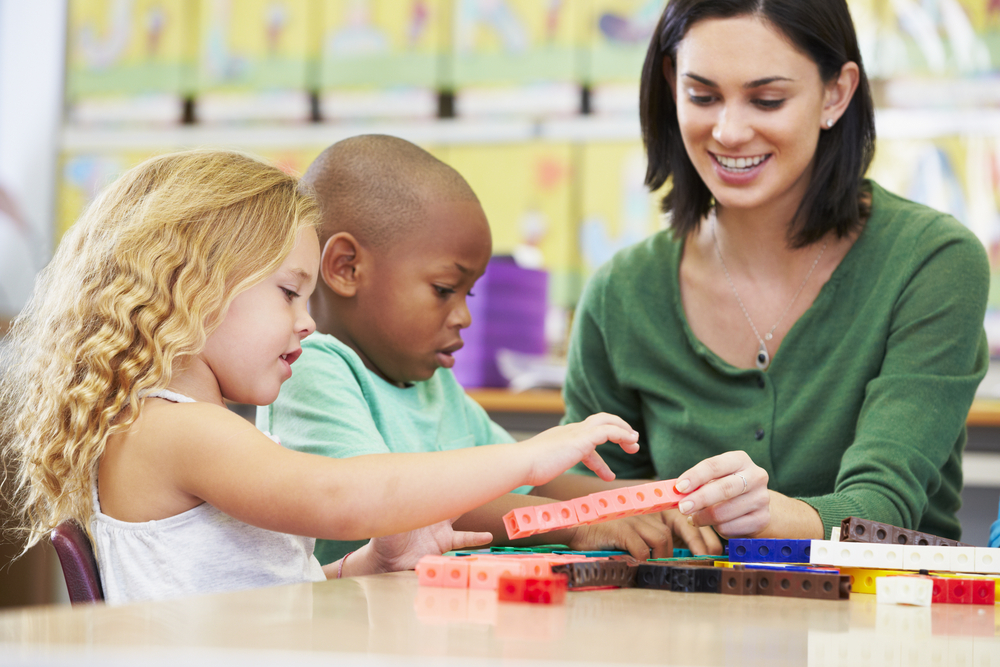
7 Number Matching Games For Fun Learning
1) How Many Items?
What You’ll Need
- 40 or so small items
- Paper clips and dried kidney beans work well
- 10 pieces of paper
- Each paper should be labeled with a number 1 – 10
What To Do
This game is a great way to master the basics of matching a specific amount of objects with their corresponding number — the perfect activity for preschool math learners!
To play, lay out all of the sheets with numbers. Your child will close their eyes, swirl their arm around, and place their finger on a random number.
They’ll open their eyes and look at the number they chose. For our example, let’s use the number 7. Once your child picks a number, they’ll count out 7 beans (or whatever small item you’re using).
Repeat the process until all 10 numbers are filled.
This activity is great for working on your child’s understanding of one-to-one correspondence (the idea that each object counted corresponds to one and only one number). This activity can also help build a child’s sense of number, which will help when they engage in mental math.
2) Splash Zone!
What You’ll Need
- Colorful chalk
- A spray bottle full of water (or an outdoor water hose)
What To Do
To start, you’ll use the chalk to write out the numbers 1 – 10 in large, bold print on pavement. If your child is a bit younger, feel free to scale back and begin with numbers 1 – 5.
You will then call out a number, and your child will race to spray that specific number with the water bottle. The water will likely erase portions of the number. This is actually a good thing!
When your child is just starting out with number matching, they may become easily confused and mix up numbers. By marking numbers with water, they will know that that number is “unavailable” for the next round.
Make sure you let them know each number can only be sprayed and used one time. You can scale the level of this activity by adding or subtracting the amount of numbers your child is working with.
You can also increase the difficulty by clapping with your hands instead of calling out a number. Your child will have to listen carefully to count how many times you clapped, then spray the correct number.
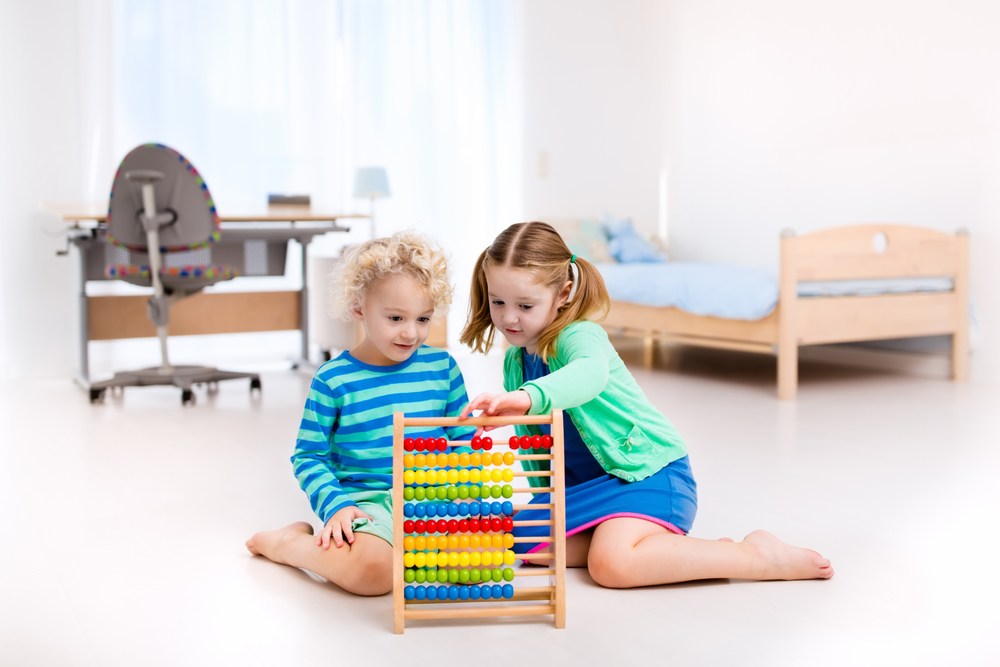
3) Number Scavenger Hunt
What You’ll Need
- Good weather
- Paper
- Pen
What To Do
You can play this game indoors or outdoors. It’s a great activity for passing the time during a walk around the neighborhood!
Write out a “checklist” of numbers 1 – 10 on the sheet of paper. Make sure the numbers are big, bold, and legible because your child will use the checklist as a reference during your scavenger hunt.
Then, off you go! You will work together to match the numbers on the checklist with the numbers they see in real life.
Mailboxes, clocks, menus at outdoor cafes — numbers could be anywhere! Feel free to play up the detective aspect of the game. It’s part of the fun!
4) Hungry, Hungry Giraffe
What You’ll Need
- A stuffed giraffe (or any animal)
- Green construction paper cut into leaf shapes
- You’ll need 10 leaf shapes
- Each leaf should be labeled with a number 1 – 10
What To Do
For this game, your child will play the zookeeper of a very hungry giraffe. But this giraffe is special because he’s a picky eater — he only eats certain numbers!
You will play the puppeteer and talk on behalf of the giraffe. When the giraffe grumbles about being hungry, he will complain about craving a specific number. For example, he may say, “Wow, I’m starving! If only I had a leaf with the number 7 on it to eat right now…”
Your child will then locate the leaf marked with a 7 and feed it to the picky giraffe.
If they feed the giraffe the wrong number, the giraffe will spit it out. “Yuck! That doesn’t taste like 7! That was the [number your child gave] leaf! I’m still hungry!”
Your child will probably laugh at the giraffe’s funny reaction. Tell them to try again until they get the right number.
This game is very silly and fun and gives your child multiple opportunities to find the correctly labeled leaf without demotivating them in the process.
5) Fill The Cup
What You’ll Need
- A small cup (you can also cut off the top portion of a larger, plastic cup)
- Large dried beans, pebbles, Cheerios, or other objects that are easy to count
- A pair of dice
What To Do
You and your child will roll your dice at the same time. Depending on what number you roll, you will add that many beans to your plastic cup.
The goal is to finish filling up your cup before the other person. Nothing is more fun than a friendly competition! Your child will excitedly roll their dice and squeal as they count out their items.
Your child must match the dots on the dice to the number of beans they add to play fair, so feel free to help them get used to the process before diving in!
If you notice they’re scooping up too many just to rush and fill their cup, feel free to change the rules of the game. Instead of rolling their own dice, you can roll for one another.
That means if they roll a 6, you count 6 beans into their cup and vice versa. That way they are counting with you — which doubles their practice — and you keep each other accountable!

6) Sticky Ball Match-Up
What You’ll Need
- 10 sheets of paper, each labeled sequentially with a number between 1 and 10
- Tape
- A balled-up piece of paper covered in tape
What To Do
After labeling the sheets of paper, tape them to a wall or flat against the ground.
Then, give your child the sticky ball. You will call out a random number and their goal is to throw the ball on the right sheet of paper and make it stick. They can try as many times as necessary to “score” and hit the right sheet of paper.
This game is simple but effective and easily scaled. One way to increase the difficulty, for example, is by representing the numbers on the paper with dots instead of number symbols.
Do what’s most appropriate for your child. Number matching games should be challenging but attainable for young learners!
7) Numbered Chocolate Chip Cookies
What You’ll Need
- Cookie dough (without add-ins)
- Chocolate chips
- Dice
What To Do
Number matching games are fun, but they can taste good, too! With this game, the reward is built-in, as you’ll be making cookies together.
Pick your favorite chocolate chip cookie recipe. Before adding chocolate chips to the batter, portion out enough batter to form the cookies.
Each cookie dough ball will get its own dice roll. This will determine how many chocolate chips can go into each cookie. You can play with a pair of dice (instead of one) if you like your cookies extra chocolatey!
Since everyone loves chocolate chips in their cookies, your child’s goal is obviously to get the highest score possible! The goal is to reach 6 (or 12 for a pair of dice) chips per cookie.
If you sneak in a couple of extra chocolate chips, we won’t tell (as long as your child counts them!).
Number Matching Games For Everyone!
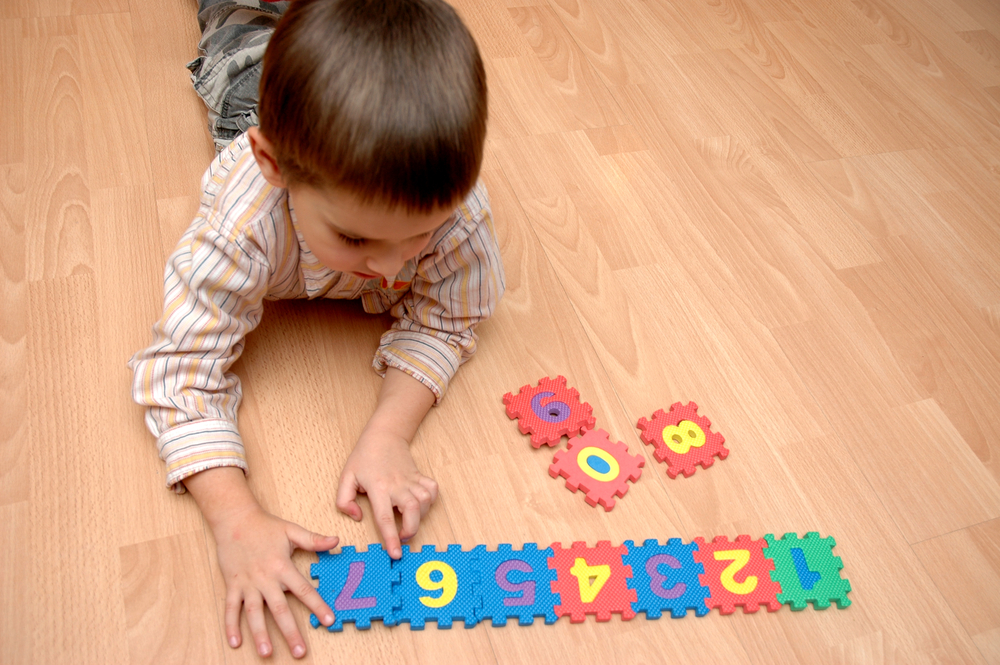
We hope these activities sparked your sense of imagination and got you thinking about how exciting number matching games can be for your child.
But here at HOMER, we know that busy families like yours may not have time for a number matching game every day of the week. Some days, it’s time to take a bath and hit the hay before you know it!
For the times when you need a helping hand, we recommend checking out our Learn & Grow app or our Explore Numbers Kit. Our personalized products are perfect for squeezing in reading and math practice for emergent learners without sacrificing a morsel of fun!

